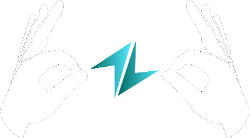The last year has been challenging. The COVID pandemic uprooted daily routines and impacted us all in ways we never thought imaginable.
Now things are beginning to open up, and life is slowly returning to more normal. For anyone learning ASL, that is excellent news. Zoom, Skype, Teams, and other online meeting tools have sufficed, but nothing can replace the benefits of in-person ASL communication. The best way to learn ASL is never a book or an app, but getting out and communicating with others in ASL.
We’ve listed three social things to do as opportunities begin to be offered again.. Always be responsible and considerate of others. Only do activities that are safe for you based on your vaccination status and family situation.
1. Meetups
Meetups are scheduled meetings, usually at a coffee shop or a bookstore. The local Deaf community usually organizes these meetings as a social event. Most meetups are beginner-friendly, and some of them are beginner-focused. Be sure to check the description of the meetup as sometimes they can specify the purpose of the event, and sometimes they are beginner-friendly with events such as practice sessions. Usually, meetups are unstructured, with medium-to-small-sized groups interacting spontaneously.
Most meetups are sign only, no voice. You should generally have a basic background in fingerspelling and introducing yourself. If you have that background, then you should be able to interact. If you are a new signer, two great resources for fingerspelling are youtube.com and this site by Bill Vicars https://asl.ms/.
Meetups are a great way to get connected with the Deaf Community. You can often find and make friends, and it can be common to be invited to other events. Building those personal relationships is key to learning ASL
It can be intimidating at first walking in, especially if you are an early-stage beginner. However, once you’re there, the environment is very welcoming. A great way to interact is to bring a t-shirt that shows something you’re interested in or have done. I often wore a Star Wars shirt to meetups and had great conversations on which character was my favorite. Bring your phone and pictures of things you’ve done or your family. You can always strike up a conversation about your family or hobbies this way. Sometimes you can even bring a board game. It is also great to get opinions on what the best websites, videos, and apps are for learning ASL.
Another positive aspect of meetups is that they are free (other than perhaps the cup of tea or coffee).
You can usually find meetups using websites such as meetup.com. If you know any ASL tutors or teachers, they can also point you in the right direction. During COVID, many of the meetups shut down or went virtual, but many of them should be starting up again. If you live in a city, you should find a meetup in your area, but sometimes meetups can be challenging to find.
2. College Classes
Most community colleges offer American Sign Language as an in-person class. Take a look at your local community college website and look at the schedule. Usually, the classes are based on the school semester or quarter system and usually start in the fall, spring, and summer. Sometimes they fill up quickly. If you are a complete beginner, ASL 1 is a great place to start, but you usually have ASL 2 and sometimes ASL 3. If you already have a good grasp on signing, it can sometimes be a lot of review of what you may know. However, you’ll be able to connect with the teacher and other students and get the in-person practice.
Most community colleges offer more than one class at each level and you can usually find a class that suits your schedule, such as a night class. Some community colleges offer certificates and even associates degrees in deaf studies. If you are evaluating a career as an interpreter then these can be useful, though usually, you need to attend a four-year program at a university before you could start your career.
Different community colleges have different tuition rates. Some classes can cost a few thousand dollars, whereas other community colleges are less expensive, usually a few hundred. If you are a university student, check your course catalog. Occasionally there will be an ASL class.
If your goal is to connect with the Deaf community classes are good as a starting point, but you should plan on getting out of the classroom and into Deaf meetups and events.
3. Tutoring
The benefit of a tutor is that you can get a customized learning experience. You can arrange a repeating meeting close to where you live at a convenient time. You can usually let the tutor know what you are interested in, and the tutor will cater a study plan to it. If you are learning along with a friend or family member, you can usually bring them. Tutors can also be very useful to students who are intermediate or advanced as classes and meetups tend not to
Tutors typically charge by the hour, and each meeting usually is around 50 dollars, but rates can vary. You also want to make sure your tutor is either deaf or has a solid background in ASL. Many tutoring sites such as wyzant.com provide the teaching background of the tutor. You can also try more than one tutor to see who you feel comfortable with.
The opportunity to have social gatherings is once again here. It still may take a little while for events and classes to get going fully again, but we encourage you to go out and enjoy them.
Apps and virtual meetings are still great learning resources and should be used in your journey to learn ASL (you can check our web app here). However, if you have the chance you should get out and meet for in-person social interactions to practice your new skills.



